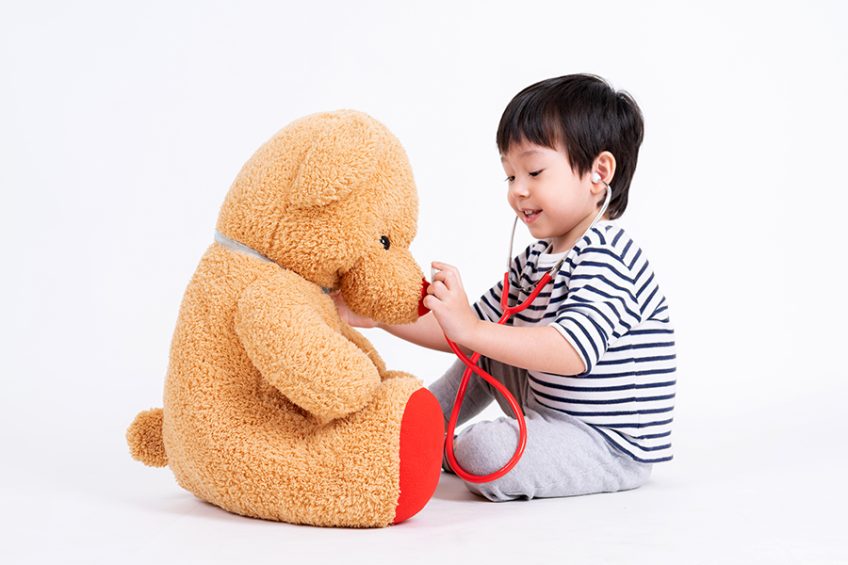The game is very important as a method of learning motor skills. The Pediatric Physical Therapy specialist must know how to behave with the child, to play with him – it is important for the physiotherapist to be able to make the exercise a play, to let the child walk through the medical gym, to make him walk. feel independent – still having permanent control and guiding the necessary therapy.
Physical Therapy or Medical Gymnastics, treats many ailments through therapeutic exercise programs, composed individually depending on the condition and its evolution or involution.
After establishing the diagnosis by a specialized doctor, the application of the physiotherapy treatment is resorted to.
Physical therapy – medical gymnastics – can correct abnormal spinal postures, such as scoliosis, kyphosis or lordosis.
Physical therapy is a long-term therapy and requires perseverance from the patient. The physiotherapist must permanently support his patient, motivate him in times of difficulty, discuss and explain each result.
CONTENT:
- Pediatric Physical Therapy results
- Spinal deviations
- Causes and factors favoring deviations of the spine
Pediatric Physical Therapy results
- gaining normal joint mobility lost after a post-fracture immobilization
- normalization of muscle tone
- training the whole body in motion and preparing the child’s body for effort
- forming the habit of correct and coordinated movements
- correcting various deformities of the spine, due to the incorrect position of the little ones on the bench or on the chair during the preparation of lessons
- treatment of diseases of the musculoskeletal system: congenital hip dislocations, flatulence, genum varum (“legs in parentheses”), genum valgum (“legs in X”).
- correction of vicious postural attitudes and axis changes of the already installed spine (kyphosis, scoliosis, hyperlordosis or flat back)
And children with neurological disorders – hemiparesis, paraparesis – can benefit from the positive results of physical therapy.
Spinal deviations
- Kyphosis is the deviation of the spine in the vertical plane. Kyphosis is manifested by the sharp curvature of the spine, forward, in the thoracic region, causing hump. Kyphosis can be compensated by a cervical and lumbar hyperlordosis to restore the balance of the spine.
- Lordosis is a change in the physiological curvature of the spine in the lumbar area. Lordosis is manifested by the accentuation of the curvature, towards the front.
- Scoliosis is manifested by the appearance of curves of the spine, especially in the lumbar region, in the frontal plane, the column taking the shape of the letter “C”, often followed by a compensatory change that occurs in the neighboring area, the spine being in the shape of the letter ” S “. This “S” deformation visible from the back, can be oriented to the right or to the left, depending on the positioning errors of the column.
Untreated, kyphosis, scoliosis and lordosis lead to an unsightly appearance of the back but especially to the appearance of back pain.
Causes and factors favoring deviations of the spine
The cause of scoliosis is not perfectly known (idiopathic scoliosis), but several favorable factors are known. Scoliosis usually occurs in childhood or adolescence and is associated with congenital factors, such as spina bifida, genetic or certain local factors, such as muscle pain or spasm, muscle or nerve disorders, or lower limb inequality.
The incorrect position of the child on the chair, at school, at the office or in the bench, the incorrect wearing of the backpack, can generate, in time, some of these unwanted deformations.
Other medical causes that can cause deviations of the spine are: rickets, myopia, hearing changes, which force the child to take asymmetrical or incorrect attitudes to correct the defect to the detriment of the normal position of the body.
Pediatric Physical Therapy – medical gymnastics – has the role of correcting the vicious positions of the child both at home and at school.
Educating the child to have a correct position on the chair, on the bench, at the table or in front of the computer, at home or at school, must be correlated with an appropriate height of the chair. The correct position is with the legs under the chair and the back straight, glued to the bench.
The backpack or backpack must be worn alternately in the hand or in the back, taking advantage of the correct position of the back. To strengthen the muscles of the spine, it is good for any child to practice a sport, such as swimming or athletics.
Pediatric Physical Therapy has an important role in correcting any abnormal changes in the skeleton, restoring the child’s full health.


